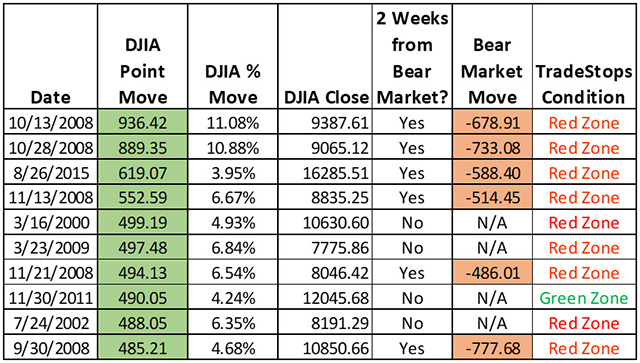I want to debunk a common piece of Wall Street advice that is dangerous to the health of your portfolio. It has to do with trying to capture the “best days” of the market.
Check out our H2 hedge fund letters here.
The buy-and-hold mantra of Wall Street tells you that it’s in your best interest to be in the market all the time.
If you’re not in the market all the time – the mantra says – you’ll miss the best trading days (and they won’t collect their fees).
There is a fatal flaw in this “best days” advice
This topic came up when John from California emailed me this question:
I recently heard a quote from a JP Morgan study indicating that six of the best 10 trading days occurred within two weeks of the worst days of a bear market for the past 20 years. Does your buy signal usually occur within a short time of renewed buying capturing some of these “best days”? I’m concerned about missing some of these best days to be in the market after following your sell or “red” zone signal.
There are really several questions here.
- Do the best trading days follow closely on the heels of the worst trading days?
- Did TradeStops get back in fast enough to capture the gains from these best trading days?
- Is an investor better off capturing getting back in the market fast enough to capture these big up days? (JP Morgan is implying that it is important in their claim, but we like to look beyond mere implied suggestions.)
Let’s tackle the first two questions to start.
Here’s a table that shows the largest daily gains of the Dow Jones Industrial Average (DJIA) from the 21st century, as of a few weeks ago. The table is sorted by the largest point move in the DJIA and shows if it was two weeks or less away from a large bear market move.
What we see in this table is that:
- Yes, six out of 10 of the biggest up days did occur within two weeks of the biggest down days. (So far so good, JP Morgan.)
- No, TradeStops was NOT in the market (it was in the Red Zone) for nine out of these 10 big up days.
Now, for the third and most important question, should John be concerned that TradeStops was out of the market for nine out of 10 of these big up days?
The answer to that question is a resounding “No!” In fact, John should be incredibly pleased that TradeStops was out of the market for these big up moves.
This next table highlights something that JP Morgan conveniently forgot to mention when bringing their claim to the media. Seven out of 10 of these big up moves all were followed by big drops in the DJIA that wiped out the big up moves before the market finally turned higher.
Take a look:

In other words, most of these big up moves were dead-cat bounces in the middle of brutal bear markets.
TradeStops was right eight out of 10 times! TradeStops was in the Red Zone for seven of the big up days that were followed by further drops. TradeStops was in the Green Zone (in the market) for one of the big up moves.
You can see what I mean here from the “best up days” that occurred during the brutal 2008 bear market. The red arrows show the worst down days and the “best” up days that followed within two weeks of the big down days.

Would you have really wanted to be in the market for these “best up days?” I didn’t think so.
Missing the best days of the market was the smartest thing you could have done. In only two cases was TradeStops out of the market when it was rising. And the TradeStops signals would have had you back in the market shortly thereafter to take advantage of the long-term uptrends.
Wall Street won’t tell you this because they want you in the markets all the time… including during harsh bear market periods. They collect the most fees that way.
But we’ll show you what really works (and back it up with data).
That’s why so many people are taking control of their own portfolios and using the TradeStops tools to become successful investors. They’ve figured out that Wall Street doesn’t work for them. “Buy and hold” is really nothing more than buy and hope.
Good Investing,
Tama
Article by Tama Churchouse, Stansberry Churchouse

